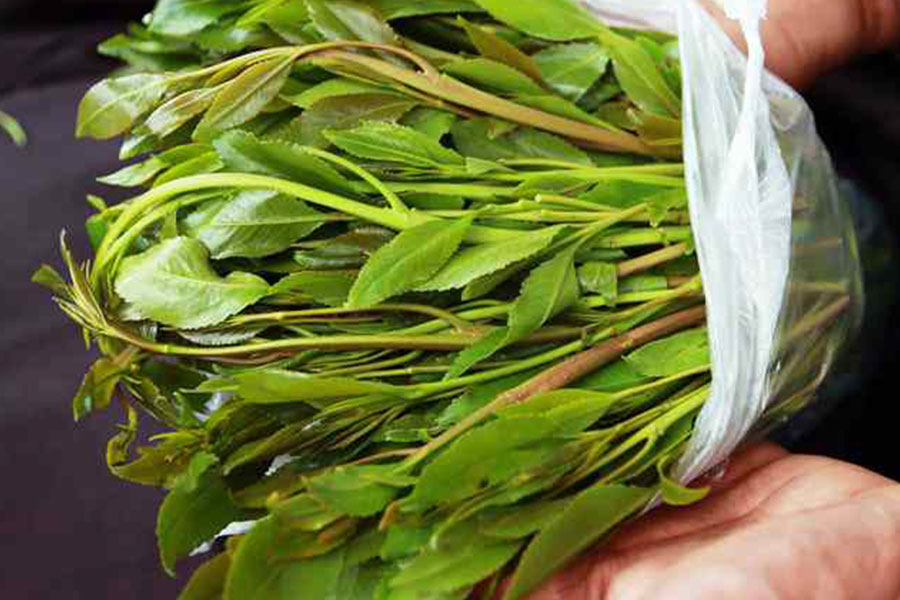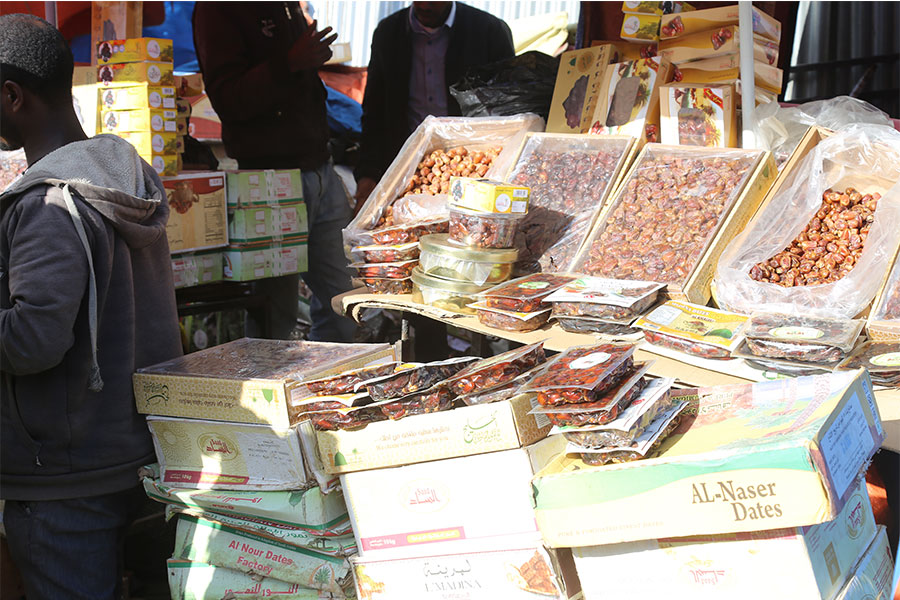
Radar | Aug 12,2023
Somalians buying khat from Ethiopia are subjected to double the price they used to pay after officials at the Ministry of Trade & Regional Integration put a price threshold of 10 dollars for a kilo. It is a change federal authorities have made in four decades.
A letter signed by Gebremeskel Chala, state minister for Trade, notified the decision two weeks ago of the changes to the National Bank of Ethiopia (NBE), the Ministry of Revenues and the Customs Commission. The Ministry experts, alongside their colleagues from the central bank and Dire Dawa Trade & Investment Bureau, conducted a study in the East and West Hararghe zones of the Oromia Regional State before raising the floor price.
The study shows the cash crop has high demands in the domestic and foreign markets, says Mesfin Abebe, director of agricultural crop exports and marketing at the Ministry. Khat is popular in East Africa and the Arabian Peninsula, with up to 10 million people consuming it daily.
Ethiopia is the leading khat producer globally, with its southeastern belt covering the largest area of khat farms.
Khat cultivation and distribution have increased rapidly despite official reluctance to promote marketing and consumption. Over the past decade, annual harvests increased three-fold, registering a little more than three million quintals last year. The area covered by the cash crop jumped by more than 200pc over the past 10 years, reaching 340,000hct. The Oromia Regional State is the top producer of khat with 1.3 million quintals a year, followed by the South-Western and Sidama regional states' 650,000qtl a year each.
The growing demand encourages farmers to turn their faces to growing khat. Ten years ago, 1.7 million farmers were cultivating khat, which swelled to 4.1 million last year.
The plant continues to be one of Ethiopia’s primary cash crops, says Abdi Muktar, deputy head of the Dire Dawa Trade & Investment Bureau, who was also involved in the study.
Earnings from khat exports accounted for 11pc (402.5 million dollars) of the total 3.6 billion dollars generated last year, representing 24pc higher than khat export revenues recorded in the previous year. The stimulant is among the agricultural commodities that made up 70pc of export earnings, trailing behind coffee and cut flowers. Gold is the only non-agricultural commodity to register higher on the earnings list.
Khat has been one of the top-five revenue-generating export commodities since the early 2000s.
Close to a quarter of khat produced last year was exported to major markets such as Djibouti and Somalia. Consumers in these countries bought 710,000qtl of khat last year, close to 80pc going to the latter.
Located 509Km east of Addis Abeba, Dire Dawa serves as a hub for Khat exporters. The town’s proximity to two of the major export destinations and to the main khat growing areas makes it a preferred destination for many of the 300 exporters the town registered. Organised under six associations, only 10pc of these companies are active exporters, disclosed Abdi.
One of these is Biftu Adugna Business S.C., first incorporated in 1994. The company exports 2,220Kg of khat daily, using some of the proceeds to import solar products, agrochemicals, reinforcement bars (rebar), and medical supplies. According to Fami Abdurahman, general manager of the company, the new threshold price does not consider the growing operational costs and shipment expenses.
The federal government plans to generate 413 million dollars from the export of khat this year. But it is little more than half of this target was met over the first eight months of the year by some of the 540 registered khat exporters at the national level.
About two-thirds of this was destined for neighbouring Somalia, according to Mesfin.
“This is the reason for adjusting the floor price," he said.
Prices for a kilogramme of khat have hovered around 5.7 dollars for the past three years. Khat is price elastic; it is an addictive commodity with no or few substitutes, according to Adane Tuffa (PhD), an economist who is a member of the Agricultural Economics Society of Ethiopia.
“There is room to increase prices even further,” he said.
PUBLISHED ON
Apr 09,2022 [ VOL
23 , NO
1145]

Radar | Aug 12,2023

Featured | Apr 22,2022

Fortune News | Jun 11,2022

Radar | Apr 17,2021

Featured | May 25,2019

My Opinion | Nov 21,2020

Verbatim | May 15,2021

Radar | Jan 04,2020

Verbatim | Oct 20,2024

Fortune News | Dec 08,2024

Dec 22 , 2024 . By TIZITA SHEWAFERAW
Charged with transforming colossal state-owned enterprises into modern and competitiv...

Aug 18 , 2024 . By AKSAH ITALO
Although predictable Yonas Zerihun's job in the ride-hailing service is not immune to...

Jul 28 , 2024 . By TIZITA SHEWAFERAW
Unhabitual, perhaps too many, Samuel Gebreyohannes, 38, used to occasionally enjoy a couple of beers at breakfast. However, he recently swit...

Jul 13 , 2024 . By AKSAH ITALO
Investors who rely on tractors, trucks, and field vehicles for commuting, transporting commodities, and f...

Jul 5 , 2025
Six years ago, Ethiopia was the darling of international liberal commentators. A year...

Jun 28 , 2025
Meseret Damtie, the assertive auditor general, has never been shy about naming names...

Jun 21 , 2025
A well-worn adage says, “Budget is not destiny, but it is direction.” Examining t...

Jun 14 , 2025
Yet again, the Horn of Africa is bracing for trouble. A region already frayed by wars...